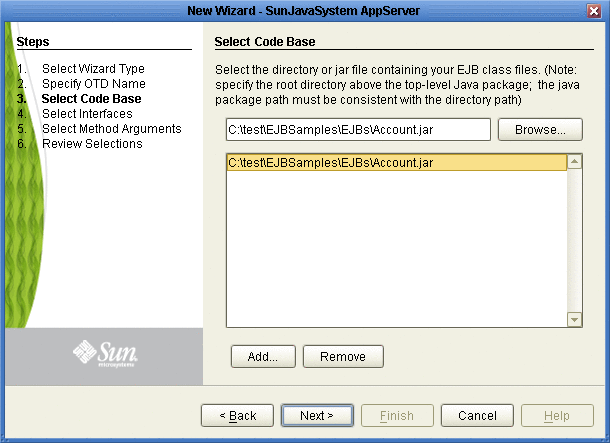 To Select Code Base
To Select Code Base
-
To select the root directory or archive file that contains the EJB class files, click Browse and navigate to and select the specific root directory or archive file. The EJB archive file must contain, at a minimum, both the Home and Remote Interface class pair for the EJB. Click Add or Remove to select or unselect any additional archive files to be available for design time (that is, in the JCD) and runtime (that is, in the Project EAR file). With the file or directory selected (at a minimum) click Next (see the figure below).
If you do not specify a JAR file, the program searches through the entire directory looking for all Java Archive files. Searches on top level drives or directories can significantly increase search times. Only recognized Class File Root file names are accepted in the File Name field.
EJB class files must contain a package name for the EJB Home and Remote Interface Classes. The wizard does not support EJB class files that do not provide a package name.
Note –EJB Class files and their dependent files must be located in a directory to be used with the OTD Wizard. The Wizard does not support EJB classes imbedded in archived files, such as EAR, WAR, or SAR files. These files must be extracted to a directory before they can be used to create an OTD.

- © 2010, Oracle Corporation and/or its affiliates
